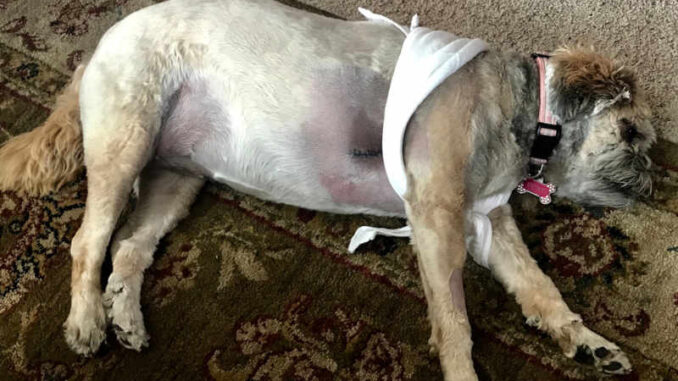

As a veterinarian ultrasound specialist, I regularly image skin masses, lumps, or swellings, and perform fine-needle-aspirates on lumps, as this can reveal whether the lump is serious or not. In this article, I will explain the top causes of lumps under a dog’s armpit, and help you evaluate the next steps to help your dog.
Most frequent lumps found under a dog’s armpit
There are several potential causes of a new lump in your dog’s armpit, and some of the most common ones include:
1. Lipomas
Lipomas in dogs are benign (non-cancerous) fatty tumors that can develop under the skin in various parts of the body, including the armpit. They typically feel soft and movable under the skin and are usually not painful. Lipomas are relatively common in dogs, and they can occur in various parts of the body, including the armpit area. A study published in the Journal of Veterinary Diagnostic Investigation found that lipomas were most commonly found in the trunk region (60.5%), followed by the extremities (23.2%), and the head and neck (9.2%).
View more pictures of lipomas with vet advice.
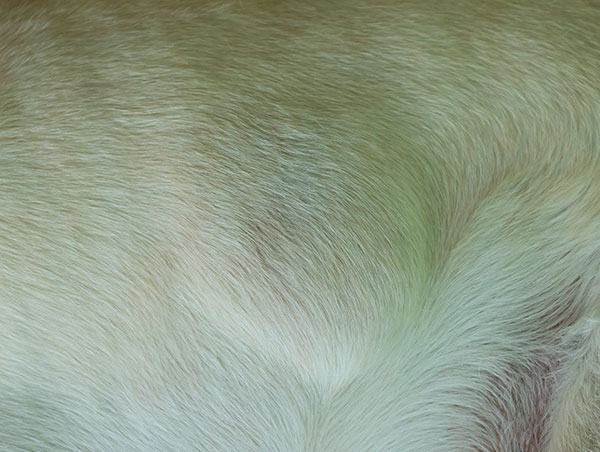
While lipomas can occur in any breed or age of dog, they are most commonly seen in middle-aged to older dogs, and certain breeds such as Labrador Retrievers, Doberman Pinschers, and Miniature Schnauzers may be more predisposed to developing them.
Treatment of lipomas:
While most lipomas in dogs are benign and do not require treatment unless they are causing discomfort or interfering with movement. In some cases, a lipoma may need to be surgically removed if it creates significant discomfort for the dog (see picture below).
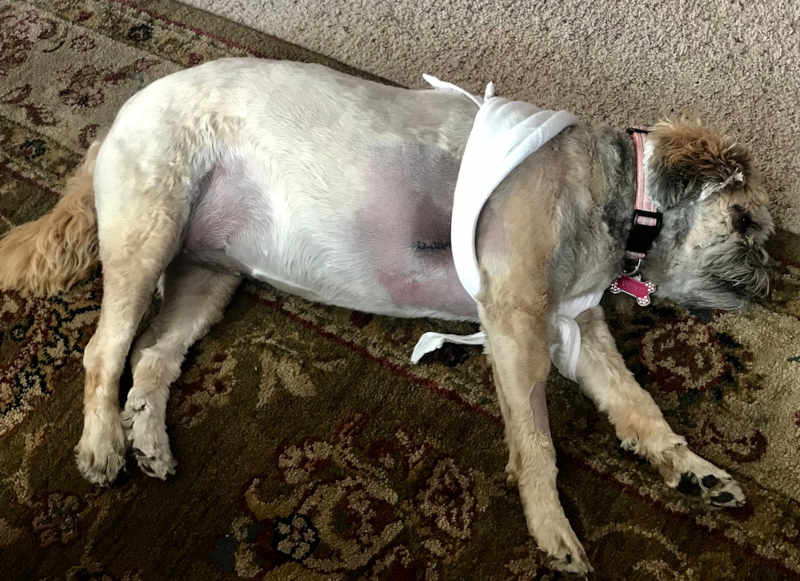
2. Cysts
Cysts are fluid-filled sacs that can develop under the skin, and may feel like a firm, round lump. Cysts found in the armpit of dogs can vary in severity depending on the underlying cause and characteristics of the cyst. Cysts are fluid-filled sacs that can develop under the skin, and they can be caused by a variety of factors, including blocked hair follicles, infections, or injuries. View more pictures of cysts in dogs with vet advice.
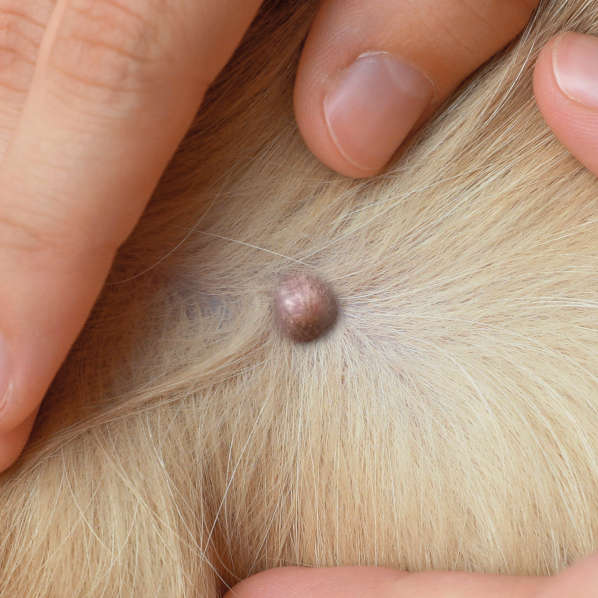
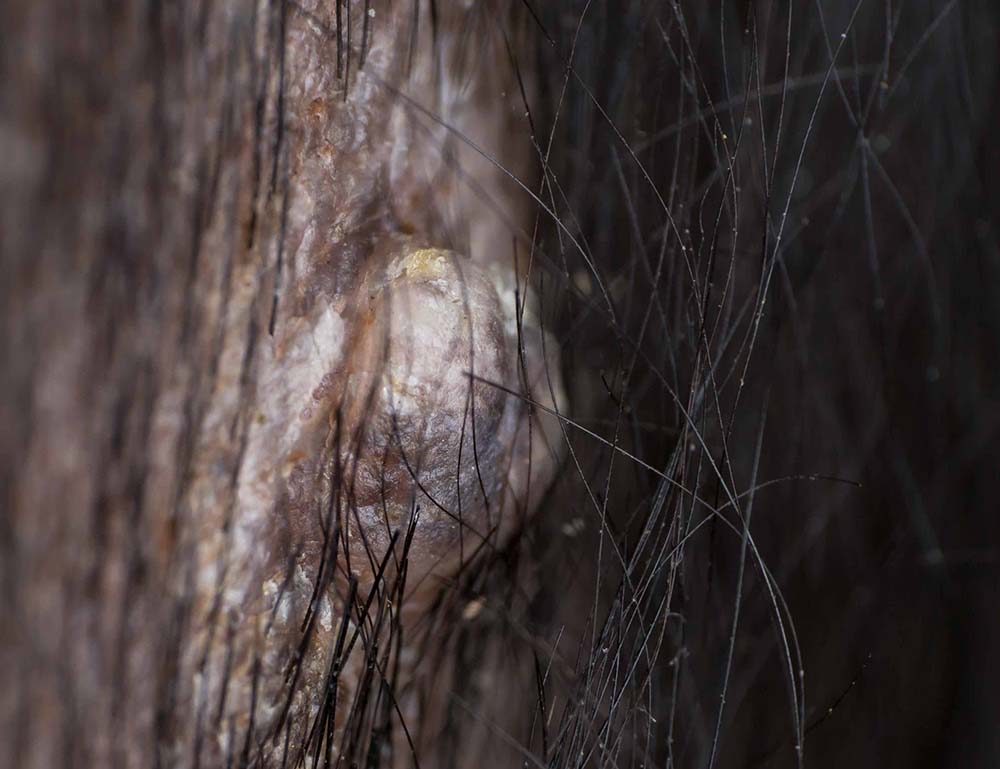
Most cysts in dogs are benign and not considered to be a serious health concern. However, if the cyst becomes infected, it can cause pain, inflammation, and possibly spread infection to surrounding tissues. In rare cases, a cyst can also develop into a malignant tumor, although this is uncommon.
Treatment of cysts: If the cyst is causing discomfort or affecting your dog’s quality of life, your veterinarian may recommend treatment options such as draining the cyst, surgically removing it, or administering medication to help reduce inflammation and infection.
3. Abscesses
Abscesses are pockets of pus that form under the skin as a result of bacterial infection. Abscesses in the armpit of dogs can be a serious health concern if left untreated. Abscesses are pockets of pus that form under the skin as a result of bacterial infection. They may feel warm, tender, and painful to the touch, and may appear red or swollen.
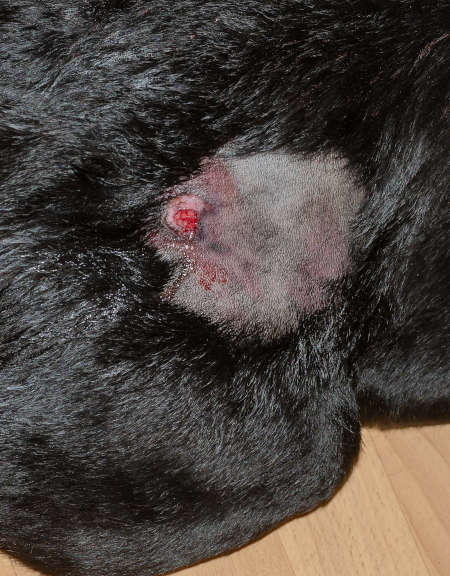
If left untreated, the abscess can grow in size, spread to surrounding tissues, and potentially lead to systemic infection. In severe cases, the infection can even spread to other organs and become life-threatening.
Treatment of abscesses: Treatment for an abscess in the armpit of a dog typically involves draining the pus and cleaning the affected area. In some cases, antibiotics may also be prescribed to help clear the infection. It’s important to have an abscess evaluated and treated promptly by a veterinarian to prevent complications and ensure a full recovery.
Prevention is also important when it comes to abscesses. Keeping your dog’s skin clean and free from cuts or abrasions can help prevent bacteria from entering the skin and causing an infection. Additionally, regular grooming and monitoring your dog for any signs of skin irritation or infection can help catch any issues early and prevent them from developing into more serious problems.
4. Mast cell tumors (MCT)
Mast cell tumors are a type of skin cancer that can develop in dogs and may appear as a lump or bump in the armpit area. These tumors can vary in appearance but may be itchy, red, and ulcerated. A mast cell tumor (MCT) in the armpit of a dog can be a serious health concern. MCTs are a type of cancerous tumor that arises from mast cells, which are a type of immune cell that are present in many tissues throughout the body, including the skin. View more pictures of mast cell tumors with veterinarian details.
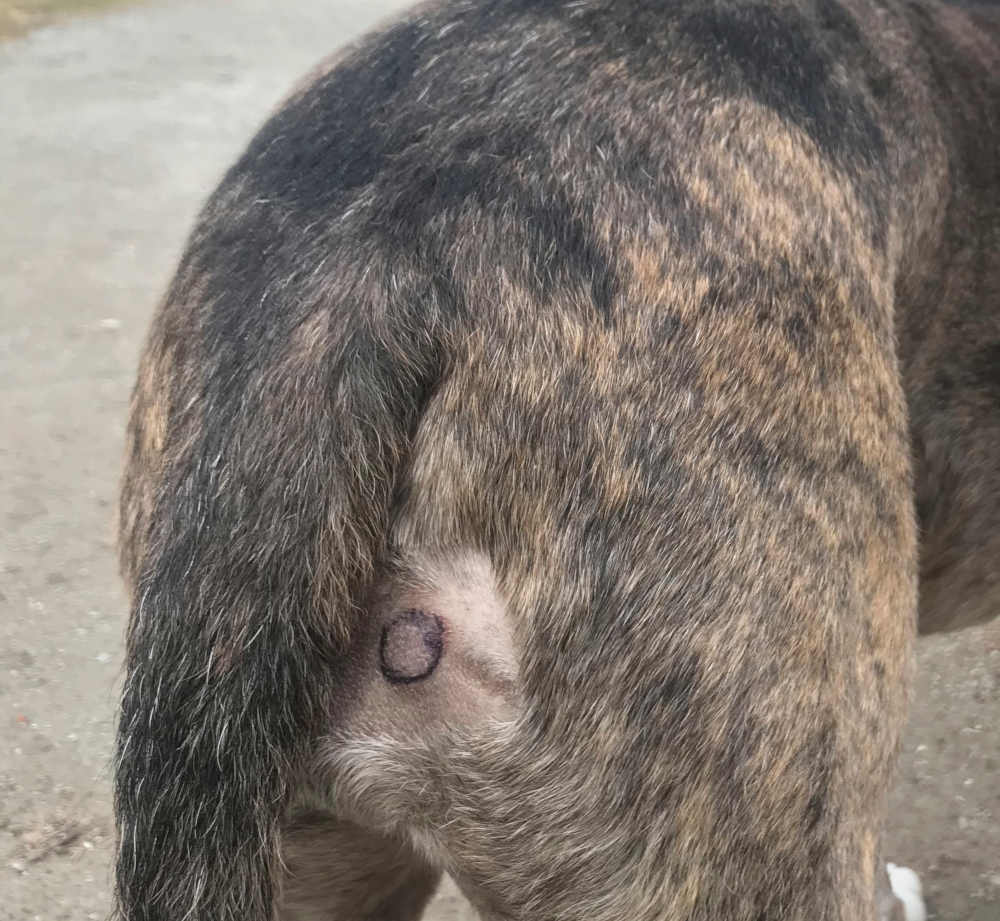
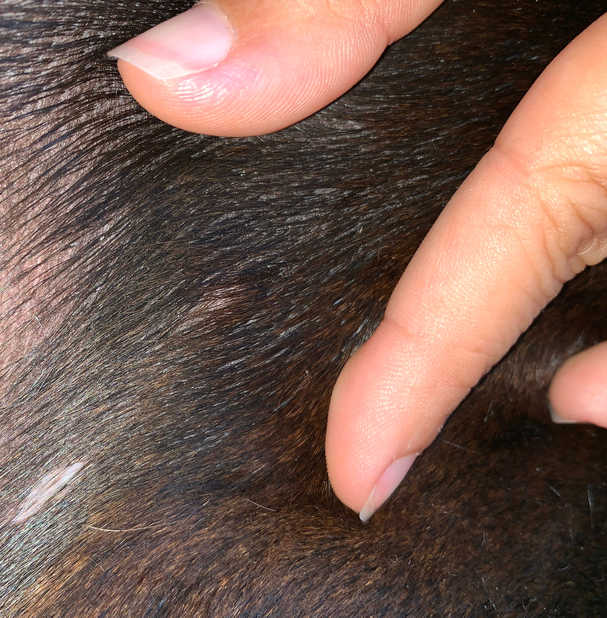
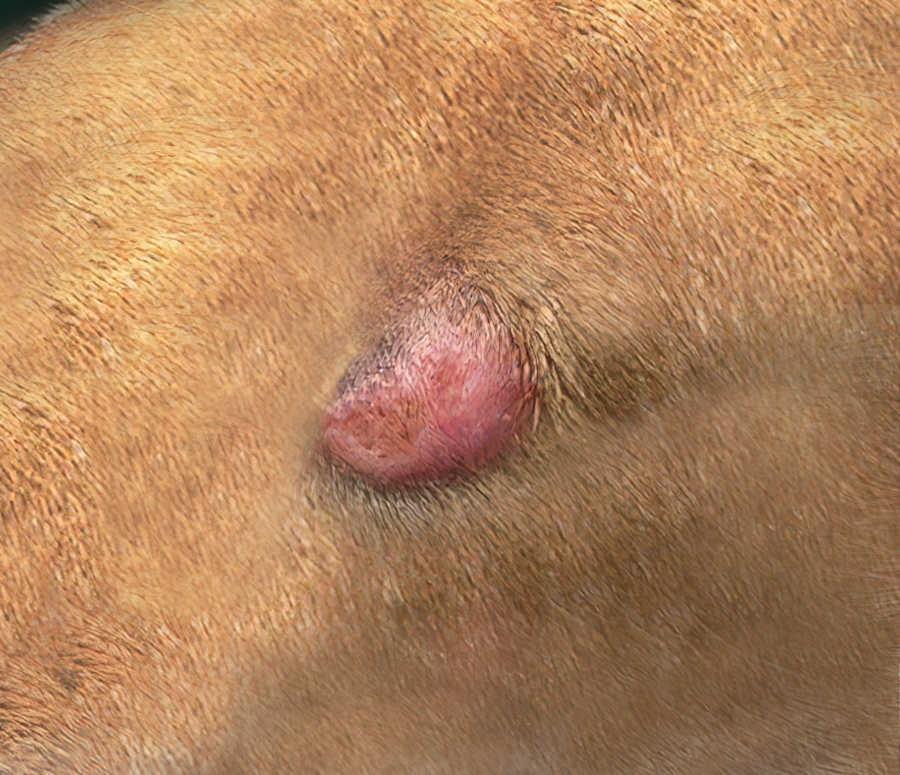
MCTs can vary in appearance and behavior, and their severity depends on various factors, such as the grade of the tumor, the location, and the degree of spread or metastasis. In general, higher-grade MCTs are more aggressive and have a higher likelihood of metastasizing or spreading to other areas of the body.
If an MCT is located in the armpit area, it may be more difficult to completely remove through surgery, which is the primary treatment for MCTs. Additionally, MCTs in the armpit can be more likely to metastasize to nearby lymph nodes, which can further complicate treatment and prognosis.
It’s important to have any new lump or bump on your dog evaluated by a veterinarian to determine the underlying cause and to monitor for any changes over time. If an MCT is diagnosed, additional tests, such as bloodwork, imaging, or lymph node biopsy, may be recommended to determine the extent of the tumor and guide treatment decisions.
Treatment of Mast Cell Tumors: Treatment for MCTs in the armpit may involve a combination of surgery, radiation therapy, and/or chemotherapy, depending on the severity and stage of the tumor. The prognosis for MCTs can vary widely depending on various factors, and your veterinarian can provide more information about the expected outcome and treatment options for your individual dog.
5. Lymph Node
In dogs, the most common cause of swollen lymph nodes in the armpit area is infection or inflammation. In other words, a swollen Lymph node might be caused by one or more of the previous causes. For example, a skin infection, tooth infection, or other type of bacterial infection can cause nearby lymph nodes to swell. Additionally, an allergic reaction (recent vaccinations) or an autoimmune disease can also cause inflammation and swelling of the lymph nodes.
However, it’s important to note that cancer, including lymphoma or metastatic cancer, can also cause swollen lymph nodes. See picture below:
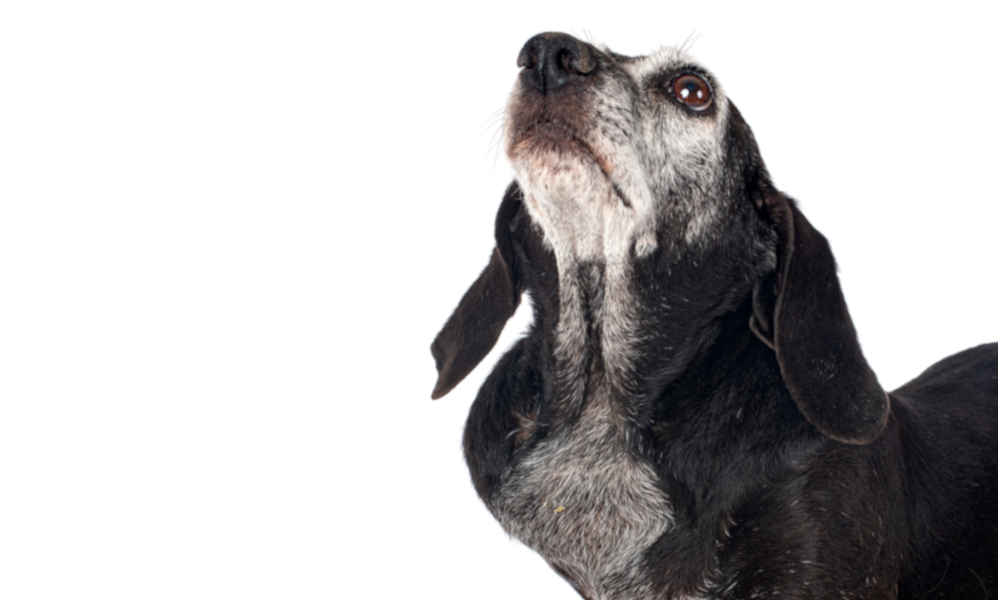
Therefore, any new lump or bump on your dog should be evaluated by a veterinarian to determine the underlying cause, and in some cases, additional testing, such as a fine needle aspirate or biopsy, may be recommended.
Armpit-specific lumps: Are they a cause for concern?
The only serious concern about a newly found lump in the armpit, would be if it were an obvious trauma. You should contact your vet promptly if:
- The lump is larger than a small lemon
- The lump is bruised or bleeding
- The lump is actively getting larger
- The dog has any other symptoms of trauma
However, because of the threat of cancer and cancerous lesions, it’s important to have a new lump evaluated by a veterinarian. Early detection and prompt treatment are essential to improve the prognosis and increase the likelihood of successful treatment.
As a general rule, lumps that develop in the armpit would not be any more serious than one that would develop anywhere else on the body. The concern here is that the armpit is not visible all of the time, and therefore, regular exams of the armpit and inner thigh regions should be checked on a regular basis.
Some lumps can be diagnosed with a simple vet visit (no tests required)
If the lump can be determined to be a cyst or lipoma, without any additional diagnostics, then the cost would just be an office visit.
Diagnosis may involve a Fine Needle Aspirate ($150-$300) or biopsy ($400-$600)
If the veterinarian wants to do a needle aspirate or impression smear, the cost to perform a needle aspiration of a lump on your dog can vary depending on several factors, such as your location, the size and location of the lump, and the specific veterinary clinic you visit. However, in general, the cost of a needle aspiration procedure is about $150-$300, while biopsies done under anesthetic cost about $400-$600 (costs will vary significantly by location). Learn more.
If the needle aspiration reveals that the lump is a tumor, further diagnostic tests such as imaging or a biopsy may be recommended to determine the type and severity of the tumor and guide treatment decisions. The cost of these additional tests and treatments can vary widely depending on the specific procedures and services required.
It’s a good idea to discuss the estimated costs with your veterinarian beforehand so that you can make an informed decision about your dog’s care and plan for any potential expenses. Additionally, pet insurance may be a useful option to help cover the costs of unexpected veterinary expenses.
Quick tips to help your dog at home before your vet appointment
While your wait for your vet appointment, there are a few things that can be done at home to help alleviate any discomfort and prevent the dog from further irritating the lump:
- Keep the area clean: Gently clean the area around the lump with a warm, damp cloth to help prevent any infection.
- Apply a warm compress: Applying a warm compress to the area for 10-15 minutes a few times a day can help reduce inflammation and promote healing.
- Use an Elizabethan collar: If the dog is licking or scratching at the lump, an Elizabethan collar (also known as a “cone of shame”) can be used to prevent further irritation.
- Monitor the dog’s behavior: Keep an eye on the dog’s behavior and monitor the lump for any changes, such as size, color, or texture.
It’s important to note that home treatments are not a substitute for veterinary care.
A new lump should always be evaluated by a veterinarian to determine the underlying cause and appropriate treatment. Delaying veterinary care may lead to a more serious condition or a missed opportunity for early intervention.
Disclaimer: This website's content is not a substitute for veterinary care. Always consult with your veterinarian for healthcare decisions. Read More.


Be the first to comment